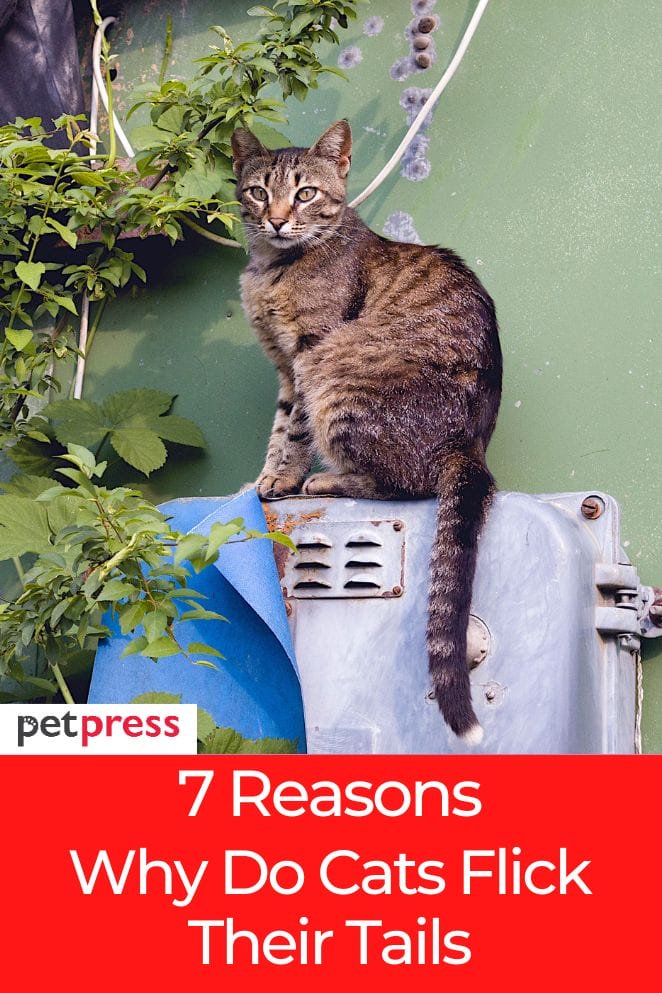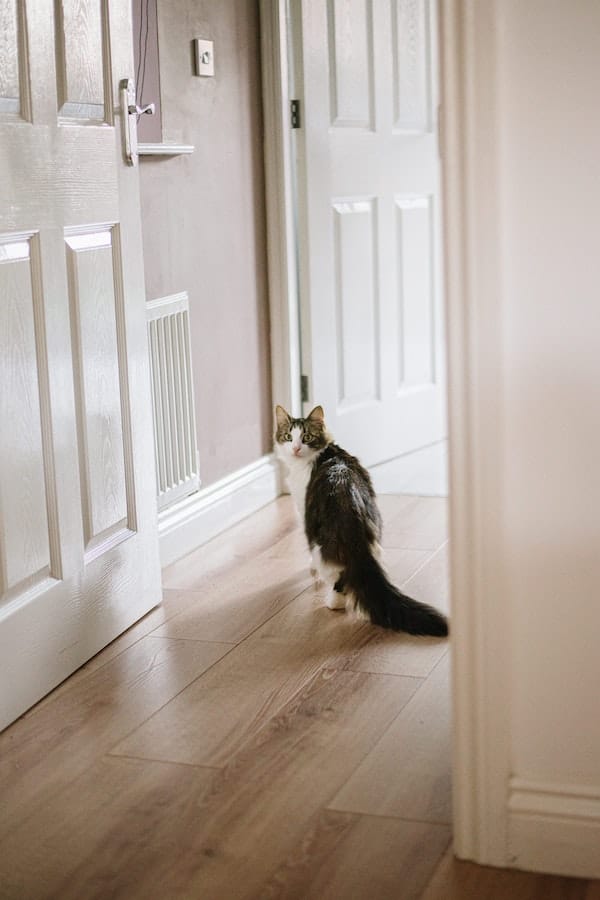
Cats are mysterious and fascinating creatures that often engage in behaviors that can be difficult to understand.
One of the most common, yet puzzling behaviors cats display is tail-flicking.
This behavior can range from a slight flick to wild swishing, but why do cats flick their tails?
In this article, we will explore the underlying reasons why cats flick their tails and how it can be useful in determining the mood of your feline friend.
What are the reasons why cats flick their tails?

There are several potential explanations for why cats flick their tails. The most common reasons are:
Expressing discomfort
Cats may flick their tails when they are feeling uncomfortable or threatened.
This could be due to an unfamiliar environment, loud noises, or any other stimuli that the cat finds unsettling.
Tail-flicking is a sign for the cat to communicate its uneasiness and urge its owner or whatever is causing it distress to back off.
It can also serve as a warning to others that the cat is feeling uneasy and may be ready to defend itself.
Tail-flicking can also be used in conjunction with another body language, such as hissing or growling, to further communicate the cat’s discomfort.
Marking territory
Cats are territorial creatures, and they often use tail-flicking to mark their territory.
Flicking their tails sends a message to other cats that this space is already taken and should be avoided.
Tail-flicking can be accompanied by other behaviors such as rubbing against furniture or scratching the floor in order to leave behind scent marks which further establish the cat’s claim to the area.
This behavior is more common in male cats and can be used to deter other males from entering their territory.
Communicating with humans
Cats may also use tail-flicking as a form of communication with their human owners.
A cat that is content and happy may flick its tail in excitement or anticipation of something that is about to happen.
This can be a sign of anticipation for food, playtime, or simply showing off their contentment with their current situation.
On the other hand, if a cat flicks its tail in quick movements and looks away when approached, it could be a sign that the cat is feeling anxious or stressed.
Showing interest and curiosity
Cats may also flick their tails when they are particularly interested or curious about something.
This could be a toy, another animal, or a person that has caught the cat’s attention.
In these cases, cats often move their tail in an intrigued manner and sometimes tilt their head to get a better look at whatever they find interesting.
This behavior is often accompanied by a focused and upright posture, indicating that the is interested in what it sees.
Signaling playfulness or aggression
Tail-flicking can also be used as a way for cats to signal if they’re feeling playful or aggressive.
Cats that are in the mood to play will often flick their tails in an inviting manner and may even chirp and purr.
On the other hand, tail-flicking can also be a sign that the cat is feeling aggressive.
In these cases, the tail will often move quickly and in an agitated manner, signaling to others that it is ready for a fight.
Why do cats flick their tails while lying down?

Cats often flick their tails when they are lying down, which can be a sign of contentment.
When cats are relaxed and comfortable in their environment, they may move their tail around to massage or scratch themselves with it as a way of showing comfort.
This is especially common when cats are lying on their backs, with their tails curled around them.
Tail-flicking can also be a sign of alertness; if the cat notices something that catches its attention, it may flick its tail to show that it is still aware and paying attention.
In some cases, this behavior can also be a sign of irritation, so it’s important to pay attention to the context in which this behavior occurs.
Why does my cat flick his tail when I pet him?

When a cat flicks its tail while being petted, it could be a sign that they are feeling overstimulated.
This behavior is usually accompanied by other signs such as twitching their ears or arching their back.
It’s important to pay attention to these signs, as they indicate that the cat has had enough and wants some space.
If the tail-flicking persists, you should stop petting your cat immediately and give them a few moments to relax before continuing.
This behavior can also be a sign of excitement or pleasure; if your cat’s tail is wagging while being petted, it’s likely an indication that the cat is enjoying itself!
Final words
Cats use tail-flicking to communicate with both other animals and humans.
It can be used as a way of showing interest or curiosity, signaling playfulness or aggression, and even as a sign of contentment when lying down.
It’s important to pay attention to the context in which this behavior occurs, though, as it can also indicate that the cat is feeling anxious, stressed, or overstimulated.
Knowing how to read your cat’s tail-flicking behavior can help you better understand its needs and emotions.


GIPHY App Key not set. Please check settings